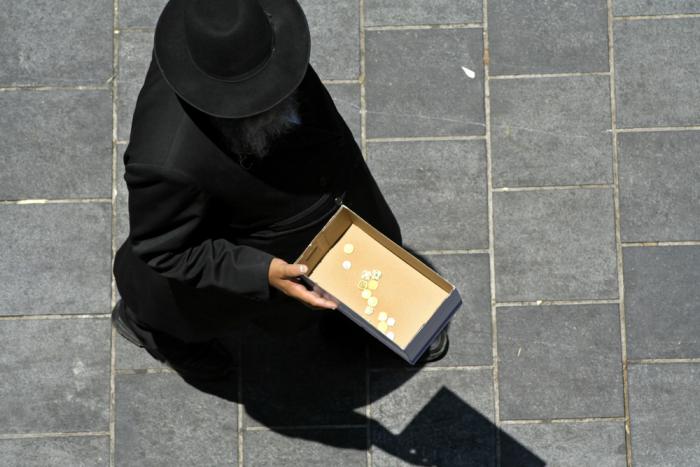- Home
- Play & Learn Home
- Online Enrichment
- Experience Modern Israel
- Israel It's Complicated
- Jewish and Me
- Jewish Holidays Jewish Values
- Jewish Values in Genesis and Jewish Values in Exodus
- Min Ha’aretz
- Our Place in the Universe
- Simply Seder
- The Prophets: Speaking Out for Justice
- Making T'filah Meaningful
- Make, Create, Celebrate
- Yom Haatzmaut Resources
- Hebrew Apps
- About The OLC
- What is the OLC?
- Introduction
- Get Started
- Resources
- OLC Content
- Parent Materials
- See My OLC Classes
- Store
A Wealth of Data Reveals Jewish Poverty
Even though the blessing of prosperity enriches the majority of the American Jewish community, an alarming number of Jews live in poverty. This finding, announced last September by Jewish community leaders, shattered the myth that Jewish poverty exists only in New York City. Anita Friedman, director of a Jewish social service agency in San Francisco, warns that despite the community's preoccupation with its spiritual survival, Judaism can't survive "at the expense of the poor and vulnerable among us."
A SHIFT IN DEMOGRAPHICS
Results from the 2000-2001 National Jewish Population Survey (NJPS) have fueled new fears about the well-being of American Jewry. The survey revealed that the U.S. Jewish population failed to grow during the 1990s, and indeed, some analysts claim it declined slightly. Although rabbis and synagogue leaders worry about the sluggish growth, all Jews should be concerned about data that describe a rapidly aging and increasingly poor Jewish community.
Lisa Brooks, a Jewish communal professional in Los Angeles, recently described her anxiety about poverty's persistent reach into the L.A. Jewish community. "We are definitely seeing increasing numbers of families and individuals at our food banks," she told the Forward newspaper.
NJPS statistics confirm Brooks' experience; about 353,000 Jews (5 percent of the American Jewish population, or one-in-twenty households) live below the federal poverty level, earning less than $9,000 per year for individuals, and less than $24,000 for a family of four. But some observers note that the NJPS probably undercounted the Jewish poor, because surveyors analyzed Jewish poverty using the government's outdated economic benchmarks- which haven't been adjusted since the 1950s. So, for example, if the poverty scale for families were raised to $25,000 to account for the higher cost of food, rent, and medicine, Jewish poverty would soar to one-in-five households. The sad reality today, says Andi Milens of the Jewish Council for Public Affairs, is that the near-poor often must decide between "buying food for the week, or buying medicine."
A LIFE OF POVERTY
The burdens of poverty- constant hunger and, in some cases, homelessness- weigh heaviest on the most invisible members of the Jewish community: new immigrants and the elderly. NJPS reported that 22 percent of the Jewish immigrants who have arrived on our shores since 1980 live in poverty. Most of these newcomers fled the former Soviet Union, seeking the freedoms and opportunities that America offers. However, their poor English skills not only prevented them from finding good jobs, but also robbed them of a voice in the Jewish community.
The Jewish elderly lack a strong voice also. Although the percentage of Jewish elderly in the general Jewish population has grown, one-in-three Jews over age 65 lives alone. Retired and living on fixed incomes, the Jewish elderly are more susceptible to economic difficulties. Not surprisingly, NJPS reported that nearly one-in-ten Jewish seniors lives in poverty.
GET INVOLVED
The NJPS snapshot of the American Jewish community captures the image of a vibrant community. But look closer; a problem looms in the background: Fellow Jews are suffering silently in poverty. Two Jewish values direct our efforts to help the poor: tzedek (justice) and gemilut hesed (acts of kindness). The pursuit of justice leads us to the doorstep of our elected officials to advocate for governmental policies that develop programs to help the poor. The performance of gemilut hesed leads us to "open our hand to the poor and needy" (Devarim 15:11) by donating time and money to Jewish social service agencies. Babaganewz.com has a list of activities that you can do to ease the suffering of the needy.
0


